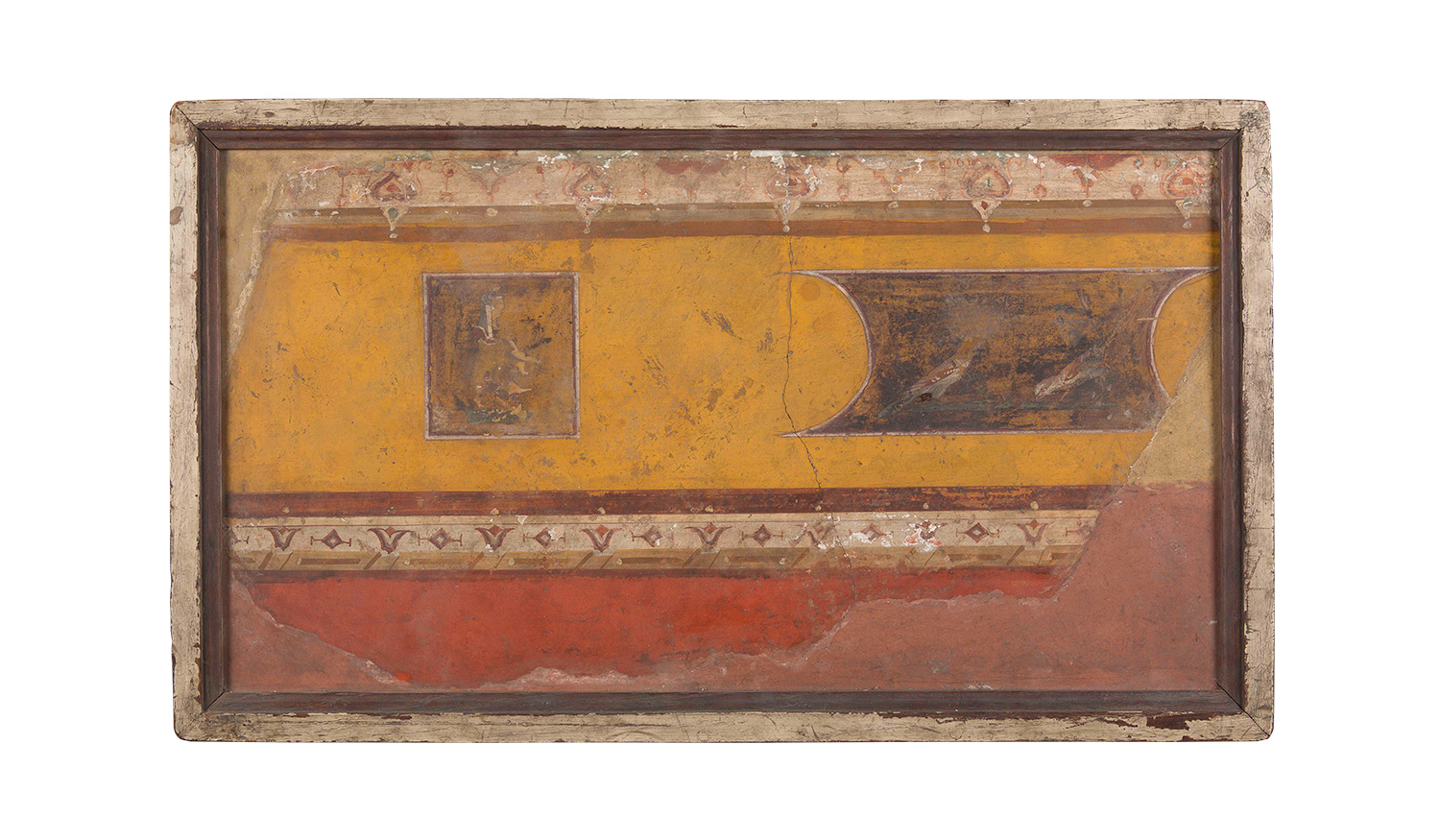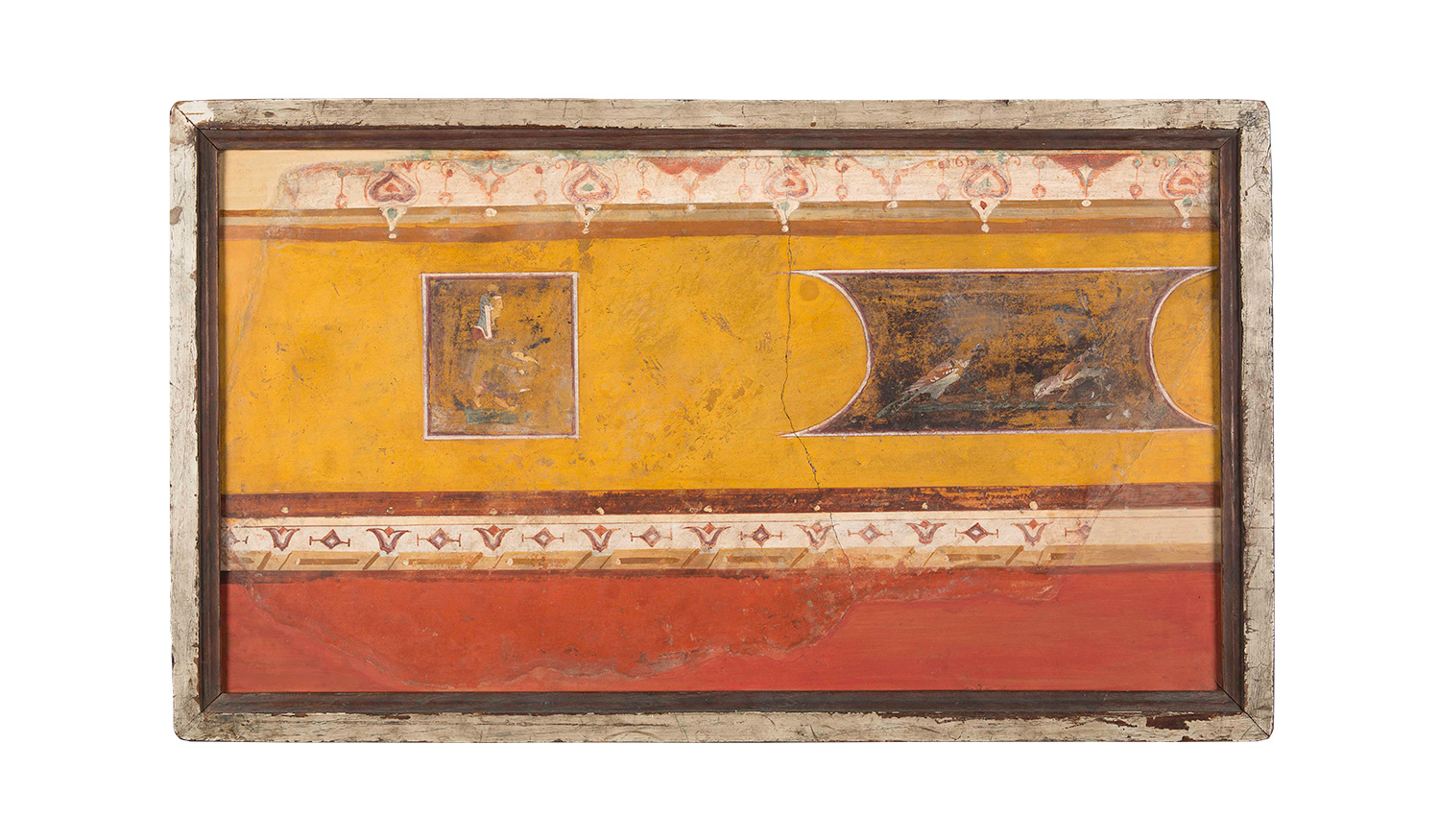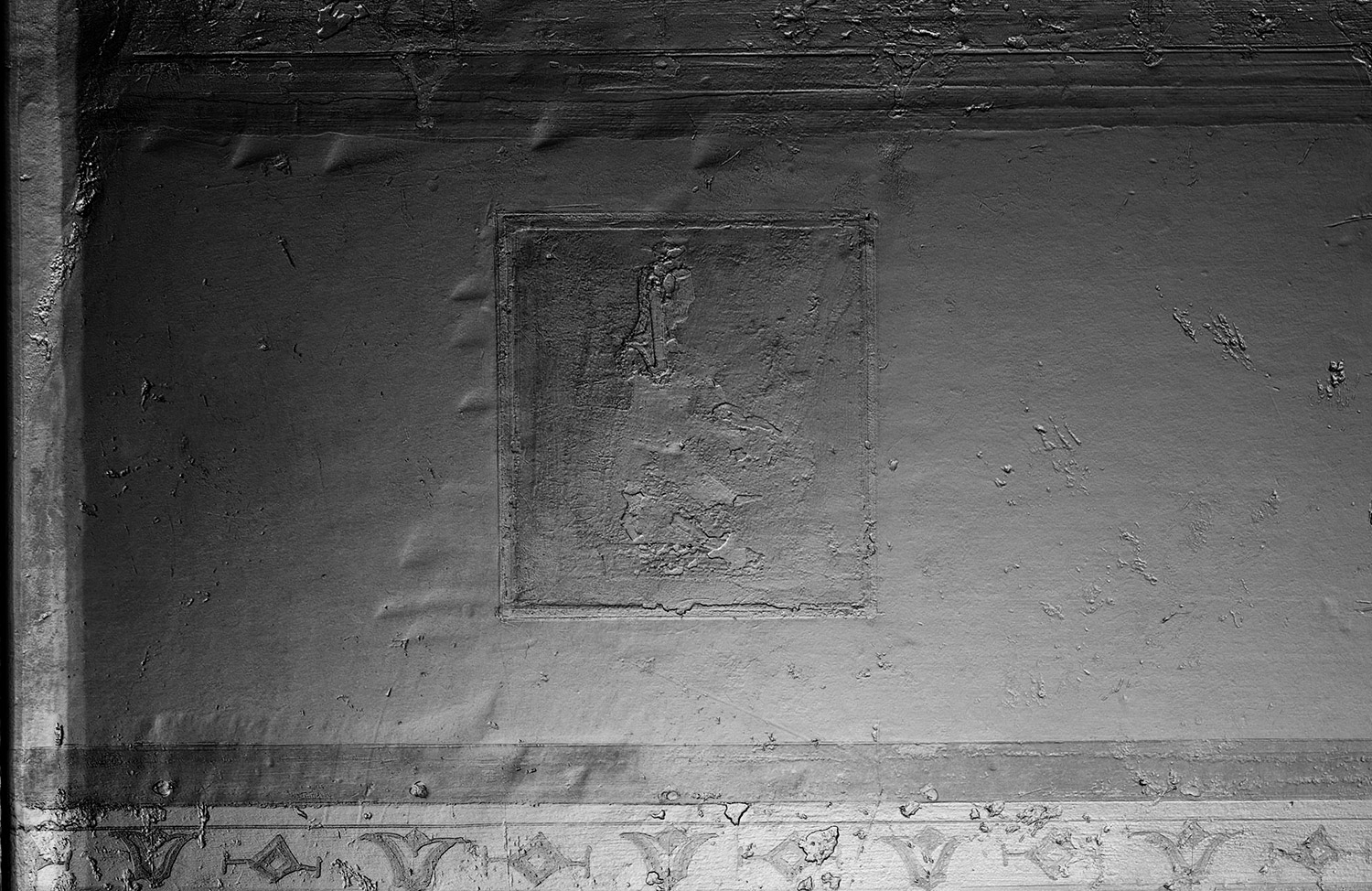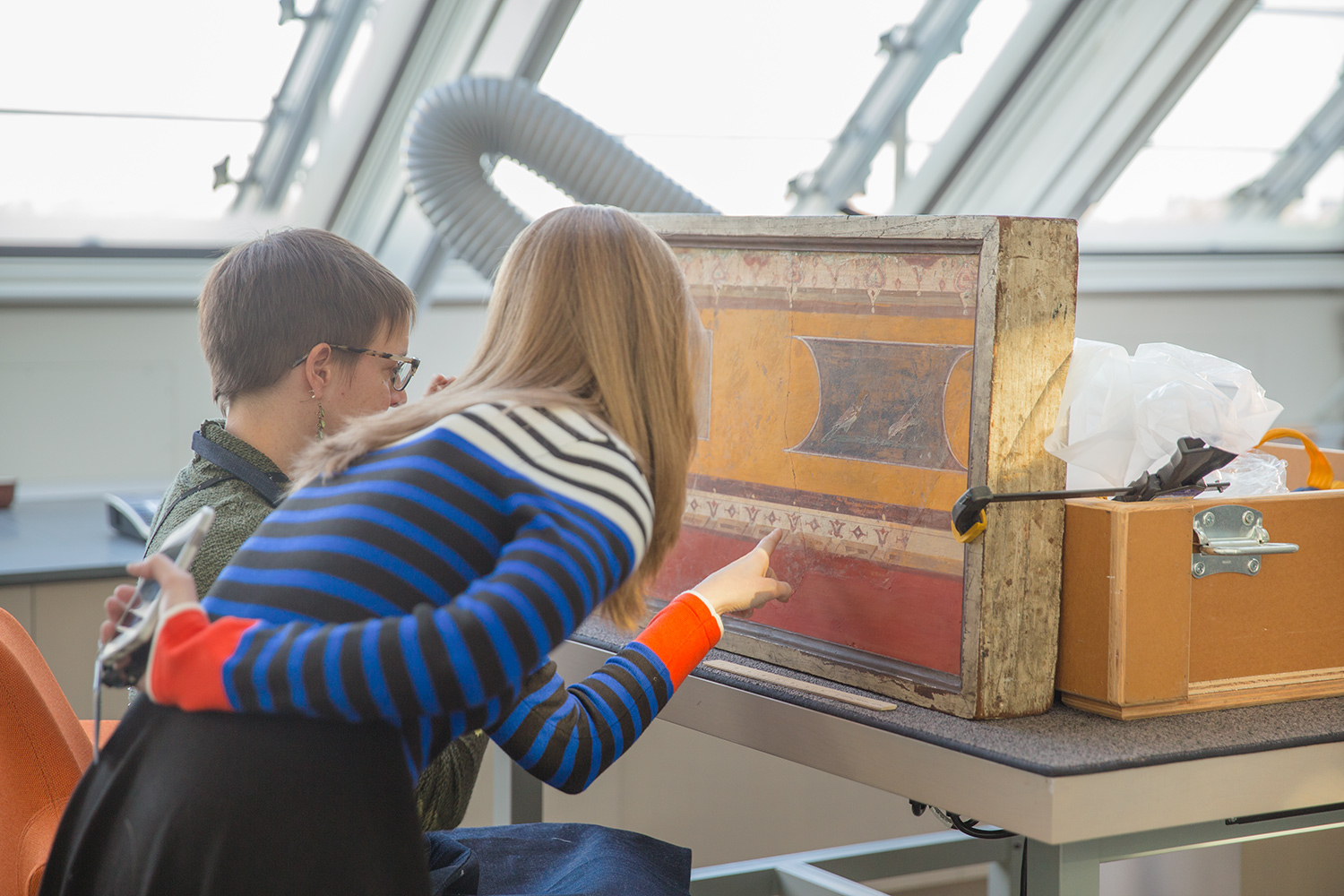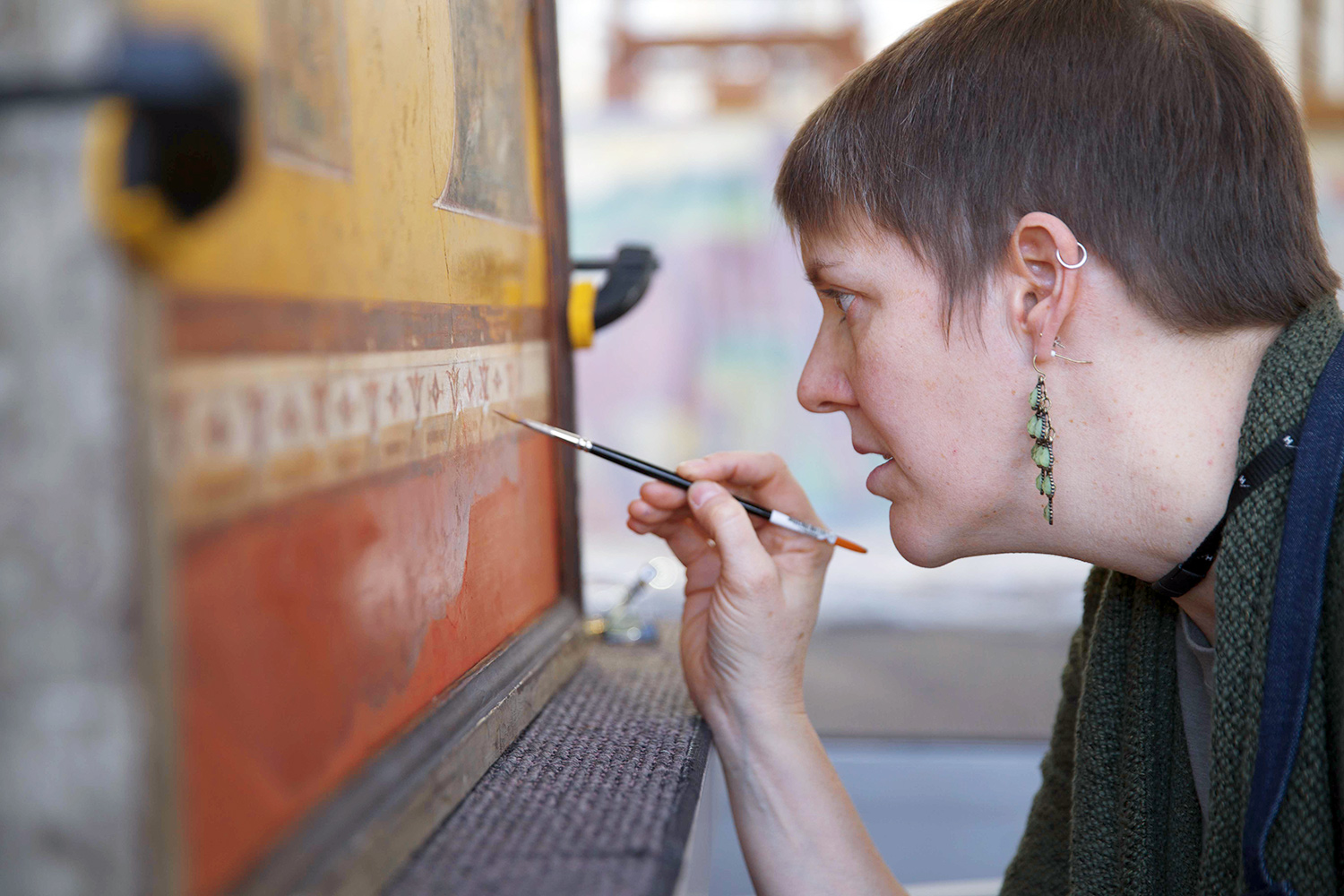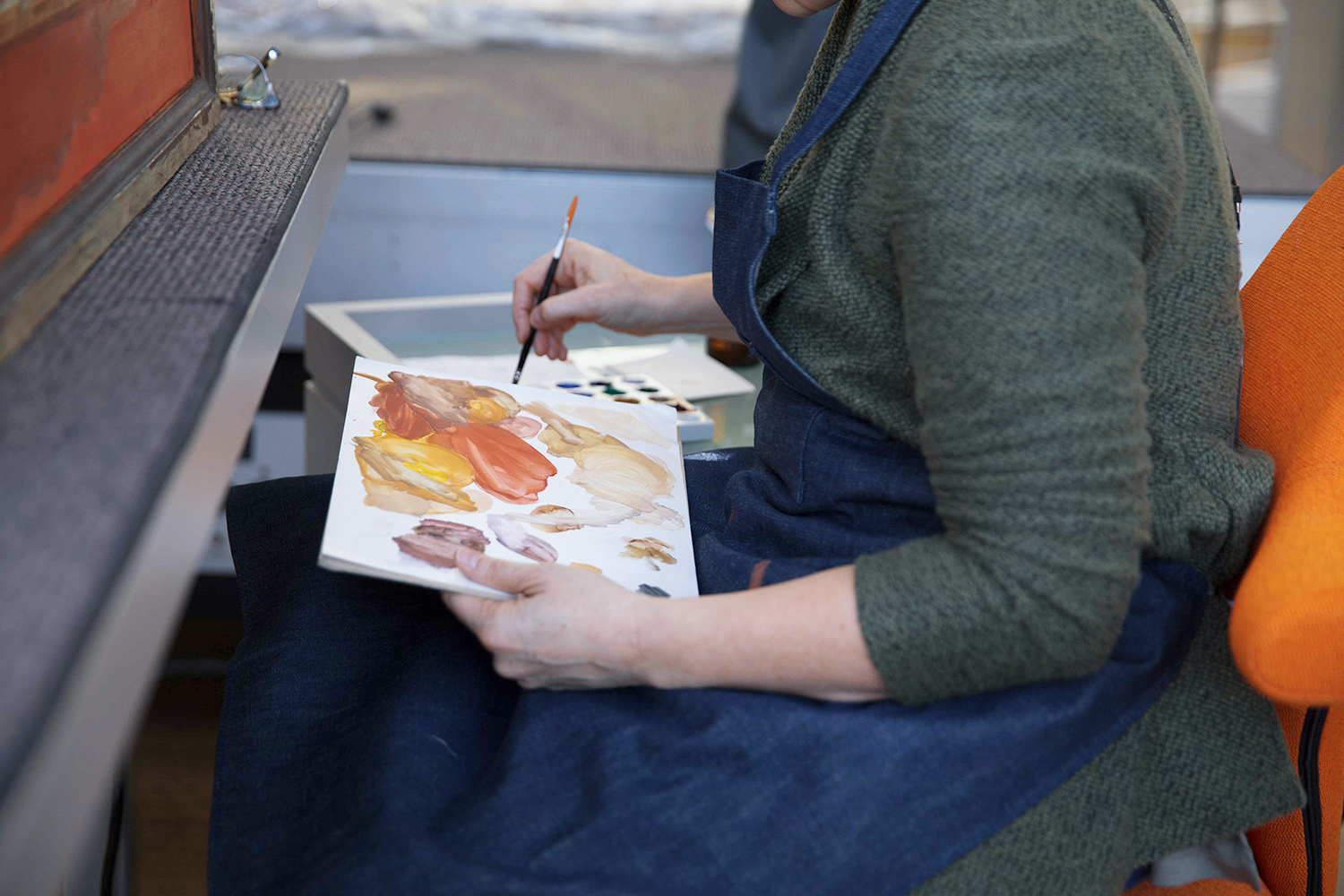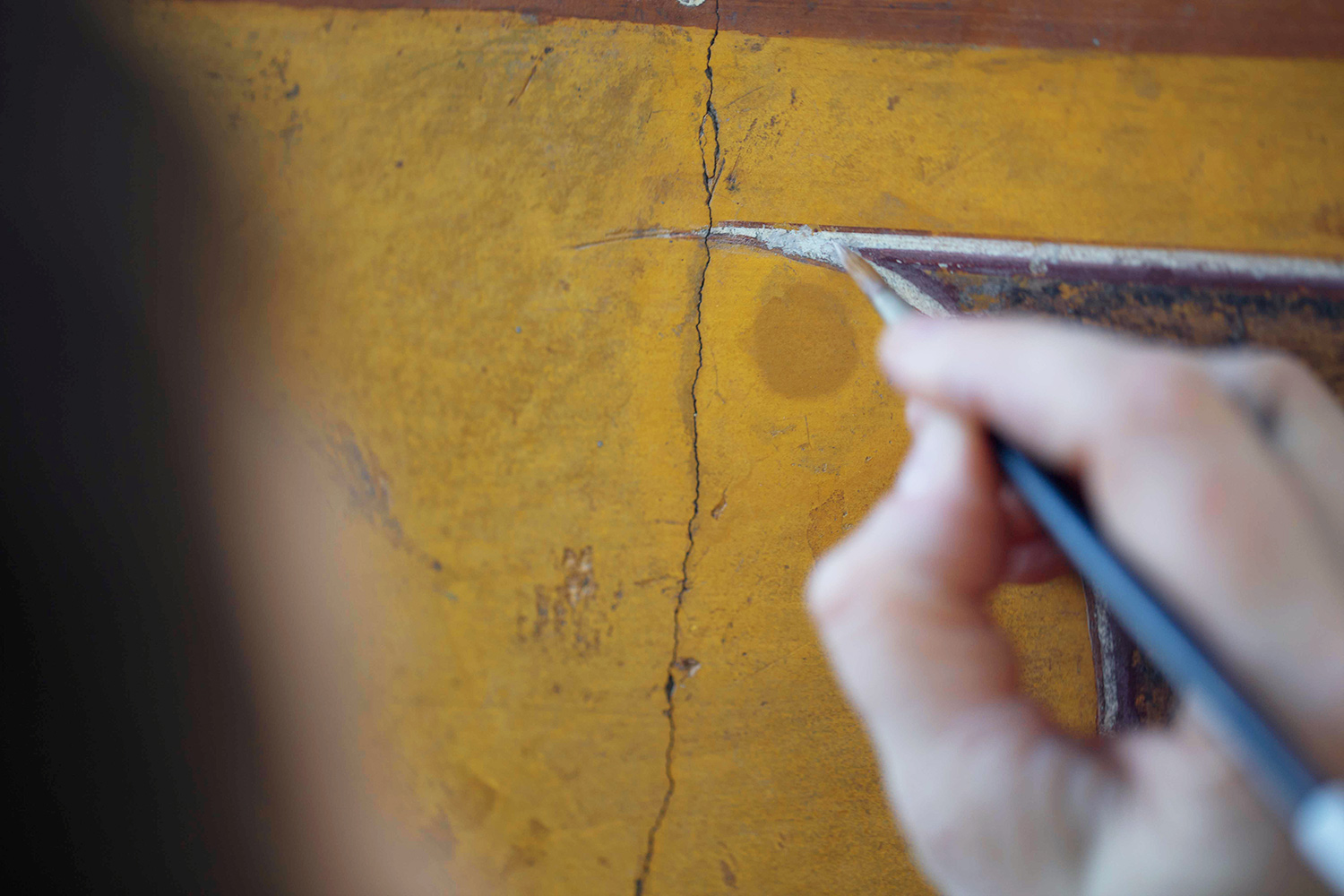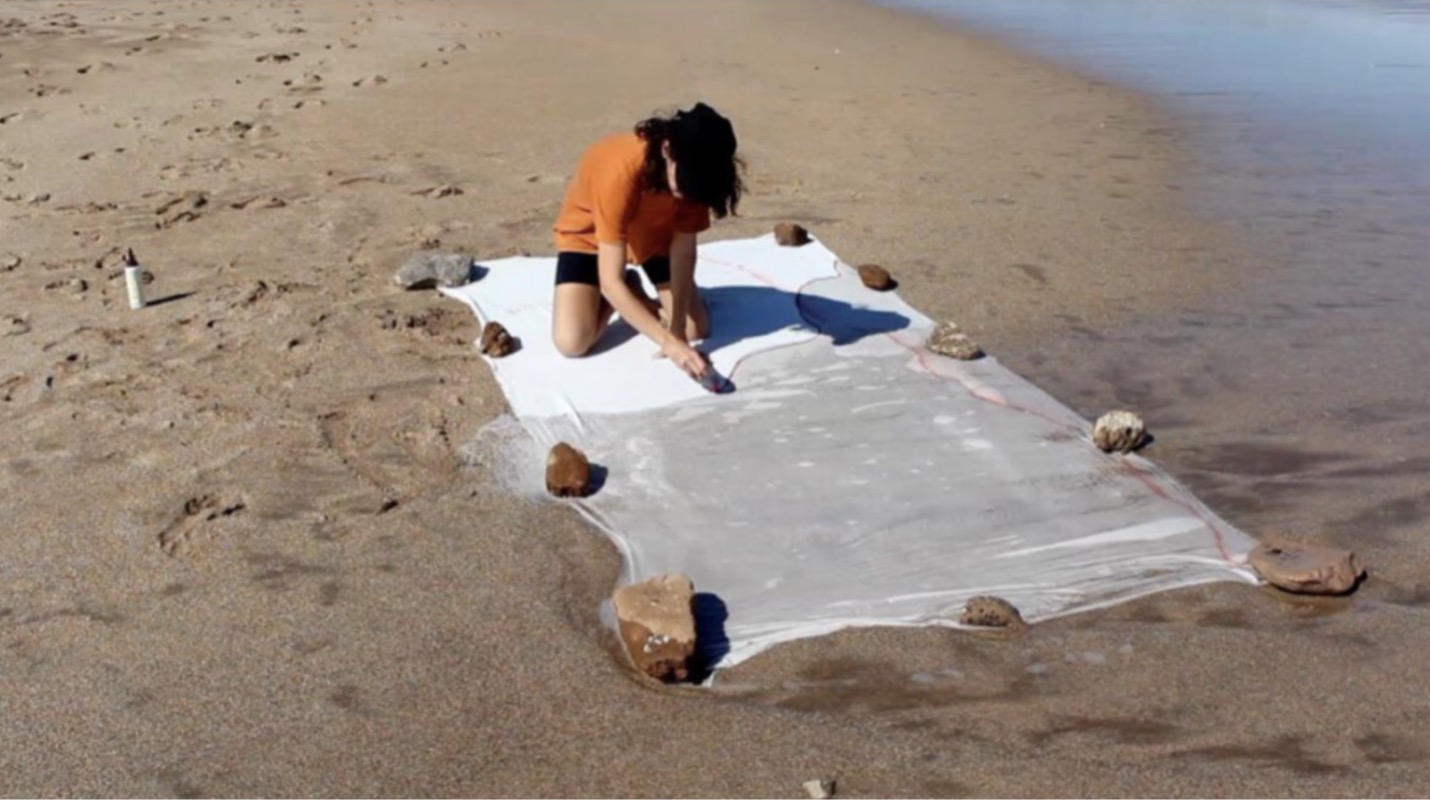While some archaeological discoveries occur in the field, others happen right here at the museums. Such is the case with a colorful wall painting fragment on display in the ancient Roman gallery, which staff at the museums rediscovered during renovation of the Harvard Art Museums in 2009.
Back on the Wall

Although the painting was given to the museums in 1921, it remained hidden deep in storerooms until recently. Now the fresco—an excellent example of the type of decoration popular in the homes of wealthy Romans—has captured the attention of curators, conservation scientists, and conservators, who are studying it for clues about daily life during the first century BCE.
The brightly colored painting was originally in a luxury villa in southern Italy, at the site of Boscotrecase near the ancient town of Pompeii, and was unearthed by archaeologists in 1903. The villa, possibly owned by the grandson of Emperor Augustus, was decorated with elaborate wall paintings, the other pieces of which are in the collections of the Metropolitan Museum of Art in New York and the National Archaeological Museum in Naples.
The Harvard painting is only a small fragment of a much larger fresco that would have covered all four walls of a room, much like wallpaper. The houses of affluent Romans were typically adorned with these floor-to-ceiling wall paintings in sophisticated patterns and motifs, advertising the owner’s refined taste and familiarity with current artistic trends. The Harvard painting, for example, depicts an Egyptian figure and Nilotic birds, motifs that were popular during the first century BCE.
New revelations about the work have been made—and are ongoing—in the museums’ Straus Center for Conservation and Technical Studies. Researchers, including Katherine Eremin, the Patricia Cornwell Senior Conservation Scientist; Kate Smith, conservator of paintings and head of the paintings lab; and Lucy Cooper, the Beal Family Postdoctoral Fellow in Conservation Science, have used a variety of techniques to learn more about how the painting was created. One technique is called Reflectance Transformation Imaging (RTI), a computational method that combines 50 raking-light photographs of an object’s surface to reveal details not easily visible to the human eye. RTI showed a number of marks where the ancient painter had rubbed a hard, polished stone tool to burnish the surface and create a lustrous shine that was typical of paintings in very wealthy homes.
To prepare the painting for display, conservators cleaned its surface, revealing colors that are even more brilliant than originally expected. (You can see the striking difference in color in the slider below.) Analysis of the fresco painting has shown that several areas contain the pigment Egyptian blue, a synthetic pigment used to achieve different shades of blue, green, and even white.
Thanks to its rediscovery and subsequent analysis at the Harvard Art Museums, the painting can now be seen in a new light. Even more information will be uncovered as researchers continue their study, but in the meantime, thanks to its recent installation, visitors can now discover the painting for themselves.
Elizabeth Molacek is the Frederick Randolph Grace Curatorial Fellow in Ancient Art.
